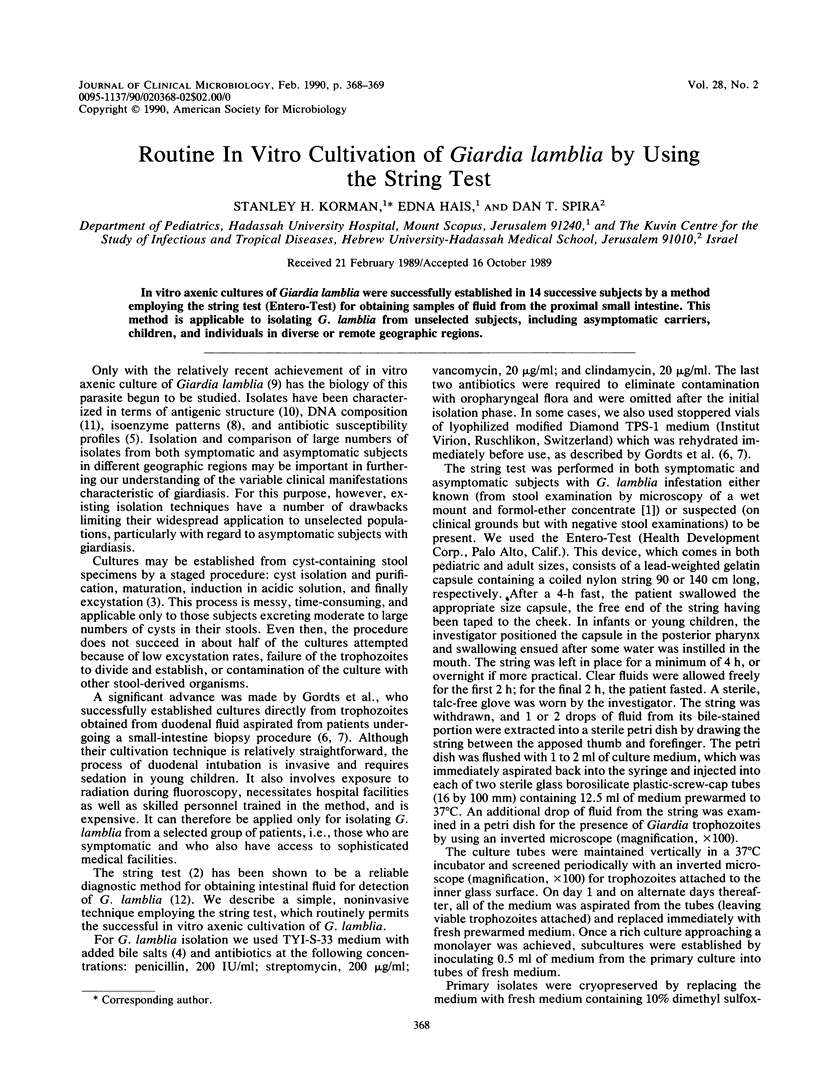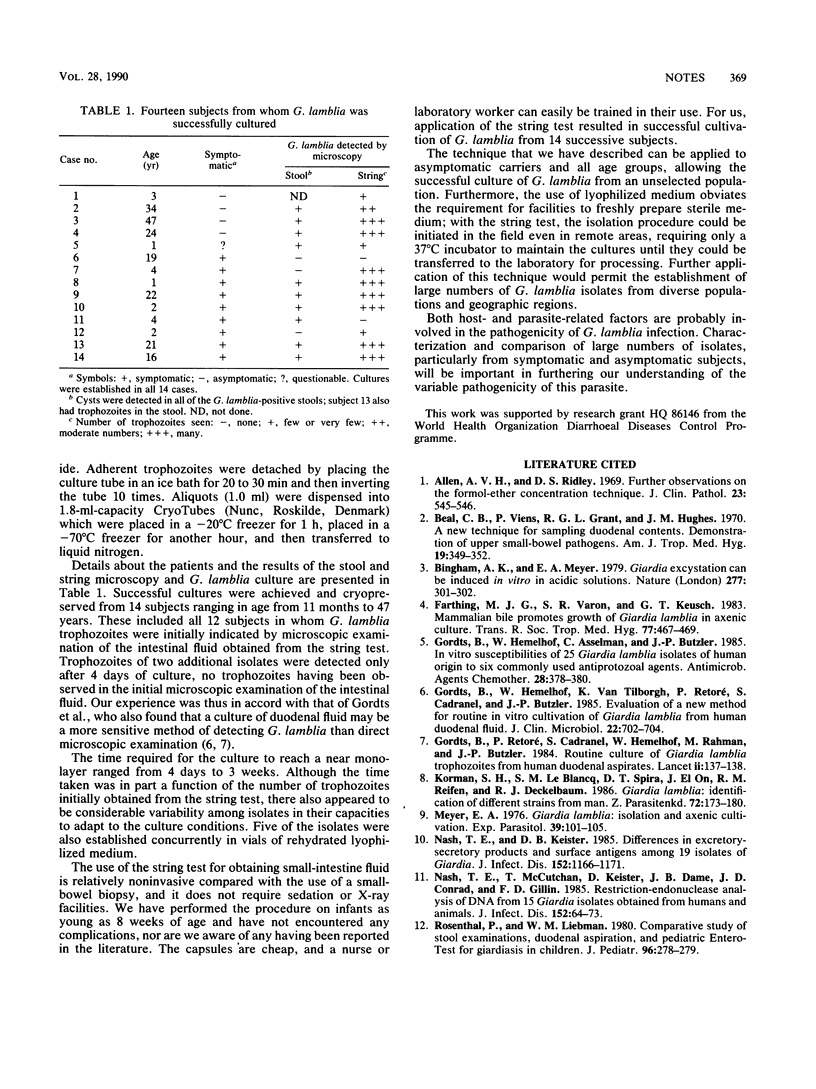Abstract
In vitro axenic cultures of Giardia lamblia were successfully established in 14 successive subjects by a method employing the string test (Entero-Test) for obtaining samples of fluid from the proximal small intestine. This method is applicable to isolating G. lamblia from unselected subjects, including asymptomatic carriers, children, and individuals in diverse or remote geographic regions.
Full text
PDF

Selected References
These references are in PubMed. This may not be the complete list of references from this article.
- Allen A. V., Ridley D. S. Further observations on the formol-ether concentration technique for faecal parasites. J Clin Pathol. 1970 Sep;23(6):545–546. doi: 10.1136/jcp.23.6.545. [DOI] [PMC free article] [PubMed] [Google Scholar]
- Beal C. B., Viens P., Grant R. G., Hughes J. M. A new technique for sampling duodenal contents: demonstration of upper small-bowel pathogens. Am J Trop Med Hyg. 1970 Mar;19(2):349–352. doi: 10.4269/ajtmh.1970.19.349. [DOI] [PubMed] [Google Scholar]
- Bingham A. K., Meyer E. A. Giardia excystation can be induced in vitro in acidic solutions. Nature. 1979 Jan 25;277(5694):301–302. doi: 10.1038/277301a0. [DOI] [PubMed] [Google Scholar]
- Farthing M. J., Varon S. R., Keusch G. T. Mammalian bile promotes growth of Giardia lamblia in axenic culture. Trans R Soc Trop Med Hyg. 1983;77(4):467–469. doi: 10.1016/0035-9203(83)90115-3. [DOI] [PubMed] [Google Scholar]
- Gordts B., Hemelhof W., Asselman C., Butzler J. P. In vitro susceptibilities of 25 Giardia lamblia isolates of human origin to six commonly used antiprotozoal agents. Antimicrob Agents Chemother. 1985 Sep;28(3):378–380. doi: 10.1128/aac.28.3.378. [DOI] [PMC free article] [PubMed] [Google Scholar]
- Gordts B., Hemelhof W., Retoré P., Rahman M., Cadranel S., Butzler J. P. Routine culture of Giardia lamblia trophozoites from human duodenal aspirates. Lancet. 1984 Jul 21;2(8395):137–138. doi: 10.1016/s0140-6736(84)91050-x. [DOI] [PubMed] [Google Scholar]
- Gordts B., Hemelhof W., Van Tilborgh K., Retoré P., Cadranel S., Butzler J. P. Evaluation of a new method for routine in vitro cultivation of Giardia lamblia from human duodenal fluid. J Clin Microbiol. 1985 Nov;22(5):702–704. doi: 10.1128/jcm.22.5.702-704.1985. [DOI] [PMC free article] [PubMed] [Google Scholar]
- Korman S. H., Le Blancq S. M., Spira D. T., el On J., Reifen R. M., Deckelbaum R. J. Giardia lamblia: identification of different strains from man. Z Parasitenkd. 1986;72(2):173–180. doi: 10.1007/BF00931144. [DOI] [PubMed] [Google Scholar]
- Meyer E. A. Giardia lamblia: isolation and axenic cultivation. Exp Parasitol. 1976 Feb;39(1):101–105. doi: 10.1016/0014-4894(76)90016-3. [DOI] [PubMed] [Google Scholar]
- Nash T. E., Keister D. B. Differences in excretory-secretory products and surface antigens among 19 isolates of Giardia. J Infect Dis. 1985 Dec;152(6):1166–1171. doi: 10.1093/infdis/152.6.1166. [DOI] [PubMed] [Google Scholar]
- Nash T. E., McCutchan T., Keister D., Dame J. B., Conrad J. D., Gillin F. D. Restriction-endonuclease analysis of DNA from 15 Giardia isolates obtained from humans and animals. J Infect Dis. 1985 Jul;152(1):64–73. doi: 10.1093/infdis/152.1.64. [DOI] [PubMed] [Google Scholar]
- Rosenthal P., Liebman W. M. Comparative study of stool examinations, duodenal aspiration, and pediatric Entero-Test for giardiasis in children. J Pediatr. 1980 Feb;96(2):278–279. doi: 10.1016/s0022-3476(80)80826-2. [DOI] [PubMed] [Google Scholar]


